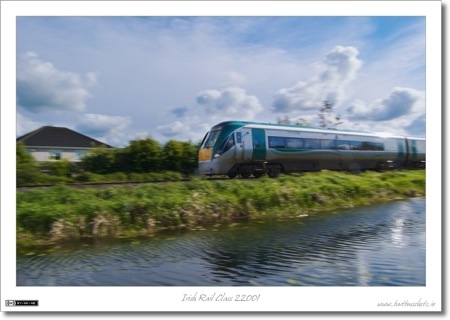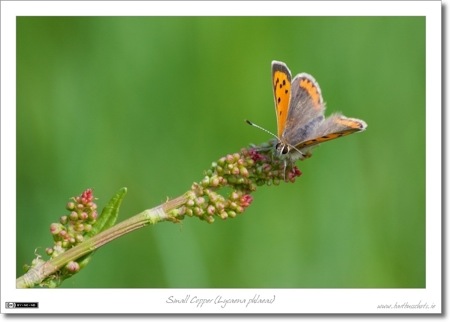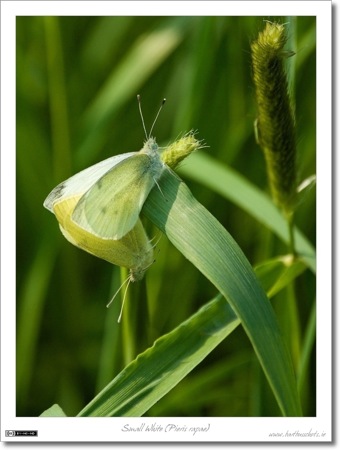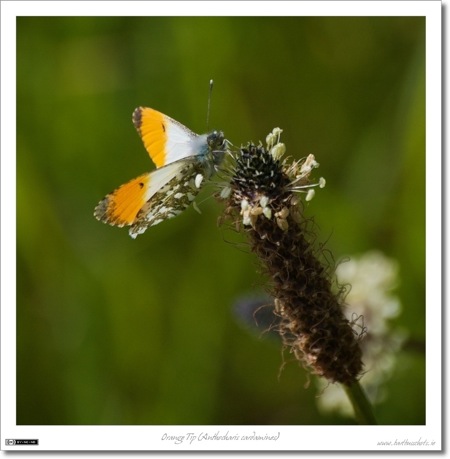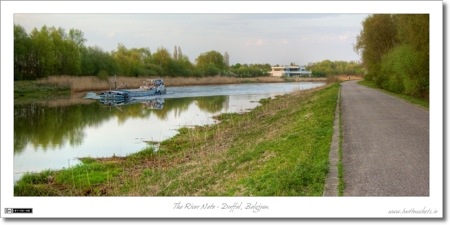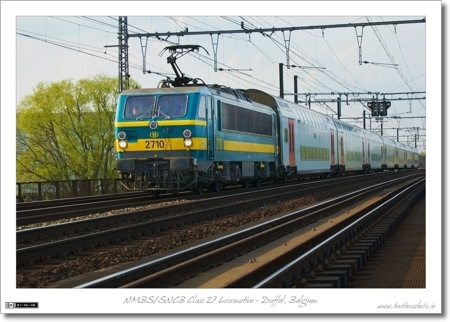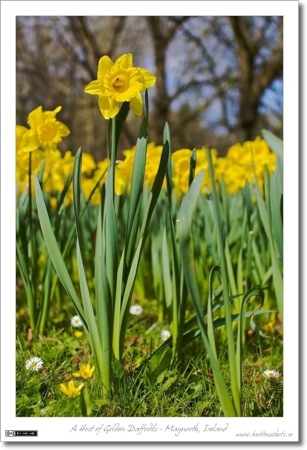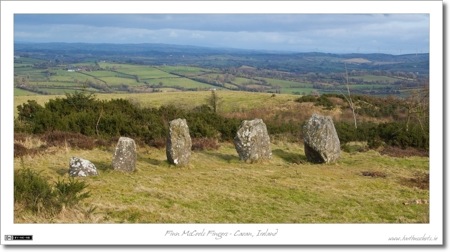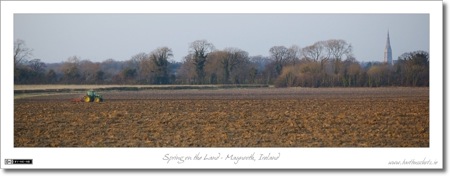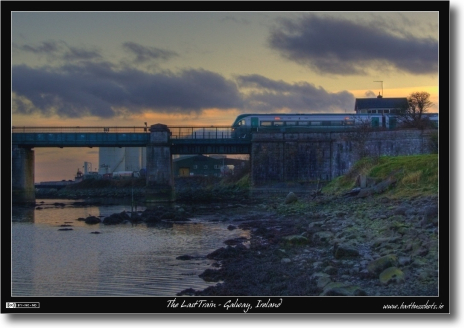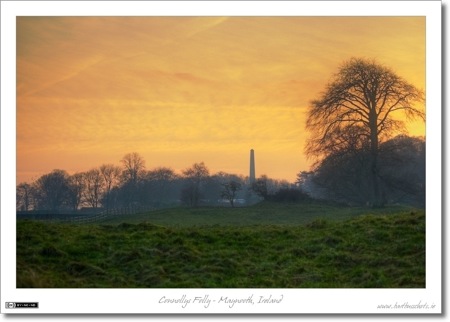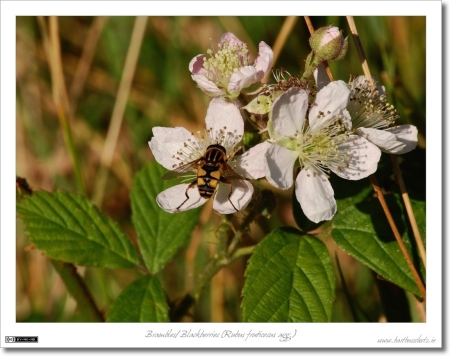Jun
25
Photo of the Week 70 – Speeding to Dublin
Filed Under Photography on June 25, 2009 | 1 Comment
It seems like just far too long ago that I did a single Photo of the week post. sure, it’s late, but not so late as to need combining with next week’s post!
This is a fairly recent shot, and one that demonstrates the results of some recent experiments to spice up my train photos by creating motion blur in-camera. The idea is quite simple, set your camera to exposure priority mode, dial in the lowest exposure you can hand-hold and keep sharp, then shoot a moving object while panning with it. To give you a better chance of success, I also set the camera to burst mode and pan with the train while constantly shooting. Not every shot will be sharp, but by shooting a burst of 10 or so you have way more chance of getting a good shot!
- Camera: Nikon D40
- Lens: Nikon DX AFS 18-55mm (D40 kit lens)
- Exposure: 1/60 sec
- Focal Length: 18mm
- Focal Ratio: f/22
- ISO: 200
- Camera Mode: Aperture Priority
- Exposure Bias: -0.3EV
- Processing: Used Aperture’s Dodge & Burn plugin to darken the sky a little, lighten the foreground a little, and lighten the train a little more.
Jun
14
Photo of the Week 67, 68 & 69 – Butterflies
Filed Under Photography on June 14, 2009 | 3 Comments
Between one thing and another I’ve missed the last two weekends so for the first time ever I’m doing a triple post for Photo of the week. Butterflies are an on-going photographic project of mine, so I thought I’d share three of my recent favourites with you all.
My first choice is a shot of a rather small butterfly, the Small Copper (Lycaena phlaeas). I much prefer the Flemish name for this little guy which translates as a Fire Butterfly, much more dramatic, and IMO, more appropriate! We have this species in Ireland too, but this shot was taken in Belgium when I spent a week there over Easter. This guy was surprisingly co-opperative, hanging around for a long time and letting me get close and get shots from lots of different angles. I got three really nice shots of this guy, but I’ve chosen this as my favourite because of the diagonal composition.
- Camera: Nikon D40
- Lens: Nikon DX AFS 55-200mm
- Exposure: 1/400 sec
- Focal Length: 200mm
- Focal Ratio: f/8
- ISO: 400
- Camera Mode: Aperture Priority
The second shot I’ve chosen is of a pair of Small Whites (Pieris rapae) mating on a grass stalk. Again, this is a species we have in Ireland, but the shot was again taken in Belgium. I like a lot of things about this shot, the grass bokeh, the grass seed stalk poking into focus at the right edge, and the overall composition, but what really makes it for me is how it illustrates the different colours these butterflies can be. They’re always white on top, but underneath they range from green to yellow, sometimes much deeper greens that in this shot.
- Camera: Nikon D40
- Lens: Nikon DX AFS 55-200mm
- Exposure: 1/800 sec
- Focal Length: 200mm
- Focal Ratio: f/8
- ISO: 400
- Camera Mode: Aperture Priority
- Exposure Bias: -1.0EV
Finally, my last choice is a recent shot I took here in Ireland on the section of towpath along the Royal Canal between Pike’s Bridge and Deey bridge between Maynooth & Leixlip. Much of the towpath has a gravel pathway along it, but this bit doesn’t, it’s pure nature for about a mile, almost constantly surrounded by trees, and passing through a cutting. You really feel like you’re out in the middle of nowhere, even though you’re no more than 10 minutes cycle from Maynooth or Leixlip. There are also much fewer people walking and cycling along the stretch, so you get to see much more wildlife. Like the Small Copper earlier, this guy also sat still for ages and let me get close and get lots of different angles. I picked this one as my favourite because I find the composition pleasing, and like how you can see both the top and underside of his wings, showing the cool patterns underneath, and the vibrant orange tip that gives this species it’s name, Orange Tip (Anthocharis cardamines). I also like the strange grassy flower he’s feeding on, Ribwort Plantain (Plantago lanceolata).
- Camera: Nikon D40
- Lens: Nikon DX AFS 55-200mm
- Exposure: 1/1000 sec
- Focal Length: 200mm
- Focal Ratio: f/8
- ISO: 400
- Camera Mode: Aperture Priority
- Exposure Bias: -1.0EV
May
20
Photo of the Week 65 & 66 – Transportation in Duffel, Belgium
Filed Under Photography on May 20, 2009 | Leave a Comment
Since I’m going to be away next weekend I’m combining this week’s photo of the week with next week’s to give yet another double-installment. As always when I combine two weeks into one, I’ve chosen a theme to unite both shots, in this case, transportation in the Belgian village of Duffel (my birthplace). In some ways these images span centuries. The first is of a heavily laden barge powering down the navigable river that passes through the village, the Nete. The Nete was the best transport link to the village for centuries, if not millennia! The second shows a train on the main line between Brussels and Antwerp which passes through Duffel. This is not the very oldest railway line in continental Europe, but it’s very close, being an extension of the very first one which ran from Brussels to Mechelen. That historic first section of what is now the line form Brussels to Antwerp opened on the 5th of May in 1835, while the remainder of the line, including this section in Duffel, opened a little less than a year later, on the 3rd of May in 1836.
Although Duffel is about 100km from the sea, Belgium is so flat that the Nete is still a tidal river as it passes through Duffel. In fact, at high tide many parts of the village are below the level of the river! For this reason the river is bordered by large dikes on both sides. These dikes are now paved, and serve the local communities as cycle and walking routes. It’s just north of Duffel that the river Nete now connects to the Nete Canal which brings shipping traffic up to the Albert Canal. Because of low bridges and the tidal nature of the river in Duffel, larger boats can only navigate the river at some times of the day, the water being too shallow at low tide, and the bridges too low at high tide. Smaller barges can navigate the river at any time without fear of running aground or crashing into bridges. In this shot we see a barge called Despatch making its way down-stream towards the village of Duffel at the very peak of high tide. As you can see by how low the barge is in the water, she’s clearly fully loaded, probably with coal, sand, or gravel. This kind of barge is low enough to pass under the bridges even at high tide.
- Camera: Nikon D40
- Lens: Nikon DX AFS 18-55mm (D40 kit lens)
- Exposure: 1/320 sec
- Focal Length: 40mm
- Focal Ratio: f/5
- ISO: 400
- Camera Mode: Aperture Priority
- Processing: lightly tonemapped in Photomatic Pro, then the barge was lightened slightly using Aperture’s Dodge & Burn plugin
My second chosen shot is of an evening express service from Antwerp to Brussels crossing the rail bridge over the Nete a little down-stream of Duffel village. This train is making its way along the same track bed that the first train between these two cities ran on way back in 1836. To put that into context, trains have been running here since 60 years after the (US) declaration of Independence. This train is made up of the best coaching stock the NMBS (Belgium’s national railway company, also know as the SNCB) has to offer. These M6 carriages give travellers two decks full of creature comforts on their short and speedy journey between Belgium’s two largest cities. The locomotive pulling the train is an NMBS Class 27 electric locomotive. Although these locomotives are approaching 30 years of age, they are still in fine condition and more than up to the task of whisking passengers between Belgian cities at speeds of up to 160km/h.
- Camera: Nikon D40
- Lens: Nikon DX AFS 18-55mm (D40 kit lens)
- Exposure: 1/500 sec
- Focal Length: 55mm
- Focal Ratio: f/5.6
- ISO: 400
- Camera Mode: Aperture Priority
- Processing: lightened the train a little using Aperture’s Dodge & Burn plugin
May
12
Photo of the Week 63 & 64 – Typical Shutter Bug Photo-Walk
Filed Under Photography on May 12, 2009 | 1 Comment
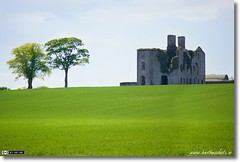 Being a week behind again this will be a double-edition of Photo of the Week. This time the ‘theme’ is that both chosen photos were taken on the same day, the 3rd of May 2009. They were taken on the first ever Typical Shutter Bug photo-walk in Ireland. Rather than just post the two chosen photos and a little description of each, I’m going to post a report on the photo-walk first. Then, at the end, I’ll post my two chosen photos with short descriptions. Before I start, I just want to give you all the link to my full photo gallery from the photo-walk on Flickr. It might be fun to follow along there since I’ve geo-tagged all my shots.
Being a week behind again this will be a double-edition of Photo of the Week. This time the ‘theme’ is that both chosen photos were taken on the same day, the 3rd of May 2009. They were taken on the first ever Typical Shutter Bug photo-walk in Ireland. Rather than just post the two chosen photos and a little description of each, I’m going to post a report on the photo-walk first. Then, at the end, I’ll post my two chosen photos with short descriptions. Before I start, I just want to give you all the link to my full photo gallery from the photo-walk on Flickr. It might be fun to follow along there since I’ve geo-tagged all my shots.
Apr
26
Photo of the Week 62 – A Host of Golden Daffodils
Filed Under Photography on April 26, 2009 | 1 Comment
I just love Daffodils, and each time I see a clump of them together the words of Wordswoth’s famous poem always spring to mind. As beautiful as a “host” of Daffodils is to look at, I’ve found it really difficult to capture that beauty well with my camera. After much experimentation, I finally got a shot I’m happy with by using a combination of a shallow depth of field, and a very low camera position. This way one Daffodil could be picked out from the crowd, while allowing the rest to form a lovely yellow and green bokeh. The reason for getting down low is to allow the one chosen Daffodil to be raised above the others in the frame, making it stand out even more than a shallow depth of field alone would allow.
- Camera: Nikon D40
- Lens: Sigma EX 30mm F1.4
- Exposure: 1/2500 sec
- Focal Length: 30mm
- Focal Ratio: F2.8
- ISO: 200
- Camera Mode: Aperture Priority
Apr
19
Photo of the Week 60 & 61 – Two Panoramic Landscapes
Filed Under Photography on April 19, 2009 | 3 Comments
Having been on holidays in Belgium and deprived of internet access last weekend I’m posting two shots at once today. When I post two shots together for what ever reason I like to choose photos that are in some way related. In this case the relationship is cropping. Both are landscape shots that I find have been greatly improved by cropping them to a panoramic aspect ratio.
The first shot I’ve chosen if of a little known megalithic monument not too far from Cavan town in Ireland. The monument is made up of five standing stones arranged in a line, and is locally referred to as “Finn McCool’s Fingers”. If you look closely in the background you’ll see a wind farm on one of the mountains in the right background.
- Camera: Nikon D40
- Lens: Nikon DX AFS 18-55mm (D40 kit lens)
- Exposure: 1/80 sec
- Focal Length: 55mm
- Focal Ratio: F18
- ISO: 400
- Camera Mode: Aperture Priority
The second shot I’ve chosen is one I came across by accident on my way to shoot a sunset at Taghadoe Round Tower. I just happened to notice that there was a farmer plowing a field with a nice background behind him. He was a long way away, but with my 55-200mm zoom I could make the shot. I had to wait for about 5 minutes until he reached the right part of the field to get the composition to work well. The church spire you see in the background is that of the Gunne Chapel on the St. Patrick’s College campus (AKA NUI Maynooth South Campus) in Maynooth, Ireland.
- Camera: Nikon D40
- Lens: Nikon DX AFS 55-200mm
- Exposure: 1/160 sec
- Focal Length: 100mm
- Focal Ratio: F4.8
- ISO: 400
- Camera Mode: Aperture Priority
- Exposure Bias: -0.33EV
Apr
7
Photo of the Week 59 – Last Train from Galway
Filed Under Photography on April 7, 2009 | Leave a Comment
Following on from last week I’ve chosen another image generated by tonemapping a single RAW file. This is an example of a shot that’s not possible with traditional HDR techniques because the train is moving. Normally HDRs are built by combining multiple separate exposures, but since the train is moving, it would appear in a different place in each exposure, resulting in a great big mess!
I took this shot while I was in Galway for a few days for a conference. The weather was mostly terrible, and there were very few trains per day, but I managed to find a moment when the weather was good, I was free from conference duties, and there was a train due none-the-less. The sky also really co-operated, putting on a spectacular show.
The train is the last InterCity service of the day from Galway to Dublin-Heuston. In this case it was made up of a single six-car Diesel Multiple Unit (DMU) set. Irish Rail only have a few of these Class 22031 DMUs, which are the big brothers of the much more common Class 22001 three-car DMUs that run many InterCity services. I quite like these modern looking trains, though I do miss the old days when InterCity services were made of up regular railway coaches pulled by locomotives. I prefer the sound of the big powerful locomotives, though I think the locals prefer these near-silent DMUs 🙂
- Camera: Nikon D40
- Lens: Nikon DX AFS 18-55mm (D40 kit lens)
- Exposure: 1/160 sec
- Focal Length: 48mm
- Focal Ratio: F8
- ISO: 400
- Camera Mode: Aperture Priority
- Post Processing: Single RAW file tonemapped with Photomatix Pro
Mar
29
Photo of the Week 58 – Connolly’s Folly at Dusk
Filed Under Photography on March 29, 2009 | 2 Comments
A somewhat controversial technique I’m very fond of is tonemapping single RAW files. Tonemapping is more normally applied to a High Dynamic Range (HDR) image generated by combining multiple shots of the same scene at different exposures. A RAW file contains much less information than an HDR image, but it still contains enough to allow tonemapping to bring out hidden detail quite effectively, though only to about plus or minus a stop and a half. I find this is a really effective way of processing sunset and dusk shots like this one.
I took this shot from just outside the derelict graveyard at Donaghmore next to Pike’s Bridge along the Royal Canal between Maynooth and Leixlip. The obelisk you can see against the dramatic dusk sky is the top of Connolly’s Folly.
- Camera: Nikon D40
- Lens: Nikon DX AFS 55-200mm
- Exposure: 1/320 sec
- Focal Length: 75mm
- Focal Ratio: F4.5
- ISO: 200
- Camera Mode: Aperture Priority
- Post Processing: Single RAW file tonemapped with Photomatix Pro
Mar
22
Photo of the Week 57 – Hoverfly on Brambles
Filed Under Photography on March 22, 2009 | 2 Comments
This is one of many shots that I’ve taken while mountain biking along the towpath of the Royal Canal in and around Maynooth. This particular shot was taken between Pike’s Bridge and Deey Bridge (just outside the Intel plant in Leixlip). On this section the towpath is not paved in any way, there isn’t even a gravel path, it’s just a grassy trail. There’s a lot more nature to be seen along these un-developed stretches of the towpath, so I enjoy cycling here the most, even if that does mean getting muddy sometimes.
I’m not really sure exactly what insect this is, but I’m assuming it’s some species of Wasp (if anyone does know please post a comment). The flowers however I can identify, they’re Bramble/Blackberry (Rubus fruticosus agg.) blossoms.
Update: Tom Gleeson has identified the insect as a particular species of Hoverfly – Helophilus pendulus, thanks Tom!
- Camera: Nikon D40
- Lens: Nikon DX AFS 55-200mm
- Exposure: 1/160 sec
- Focal Length: 200mm
- Focal Ratio: F20
- ISO: 200
- Camera Mode: Aperture Priority
- Exposure Bias: -0.67
Mar
20
A Short Tribute to Mort Lachman
Filed Under Photography on March 20, 2009 | 1 Comment
The single best thing about being involved in the Mac community is the great people you get to meet (all-be-it virtually). This evening my thoughts are with one of those people in particular, Robert Lachman of Photography and the Mac, Mac Review Cast, and NosillaCast fame. Over the past months I’ve really been enjoying a series of photos Robert’s been posting to his blog. They’re pictures of the great Bob Hope taken by his dad, Mort Lachman, who was on of Bob’s main writers. The photos are fantastic in their candour and lack of any pretentiousness.
I was very sad to read earlier in the week that Mort was in hospital having suffered a heart attack, and even sadder today to learn that he has passed away. Robert has posted a fantastic video on his website, which I think serves as a wonderful tribute to his Dad. I also think everyone should check out Mort’s great series of Bob Hope photos, they really are something special.
If you read this Robert, you and your family are in my thoughts at this difficult time in your lives.







